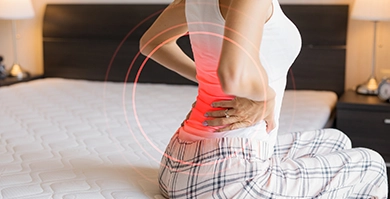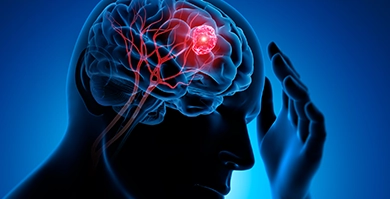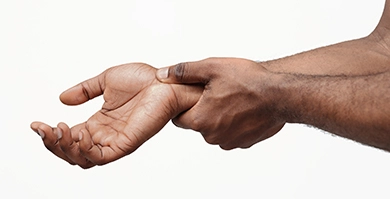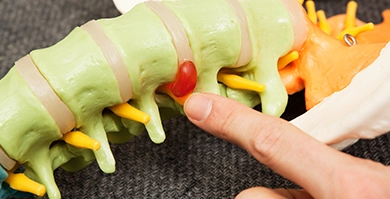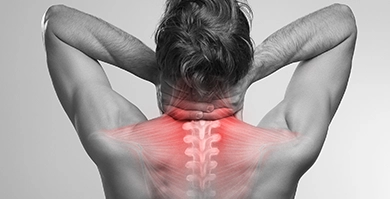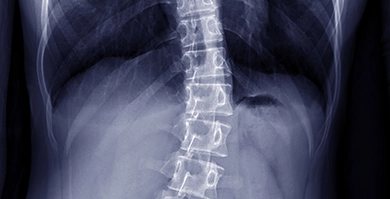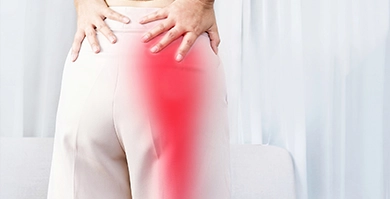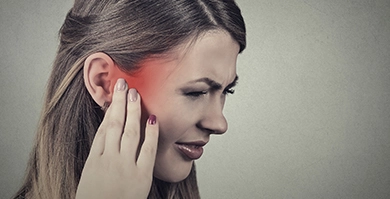Various Conditions We Treat At Legacy Brain & Spine
We want our patients to be as informed as possible about their health, so we can help them make considered decisions about their treatment plan.
CONDITIONS
We treat a wide range of brain and spine conditions and diseases.
PREPARATIONS
Learn how to prepare for your surgery at our center
TREATMENTS
We treat a wide range of dysfunction caused by spinal & brain disorders.
 Arthritis is when the cartilage wears away between the joints. The most common areas people experience this is in the hands, back/neck, hips and knees. As this happens, people will begin to experience pain, swelling and stiff joints along with loss of range of motion. Common arthritis symptoms of pain and stiffness are usually caused by degenerative arthritis (osteoarthritis).
Arthritis is when the cartilage wears away between the joints. The most common areas people experience this is in the hands, back/neck, hips and knees. As this happens, people will begin to experience pain, swelling and stiff joints along with loss of range of motion. Common arthritis symptoms of pain and stiffness are usually caused by degenerative arthritis (osteoarthritis).
There are more than 100 types of arthritis include rheumatoid arthritis and gout. A diagnosis is necessary in order to develop a treatment plan.
 A brain tumor is a collection, or mass, of abnormal cells in your brain. Your skull, which encloses your brain, is very rigid. Any growth inside such a restricted space can cause problems. Brain tumors can be cancerous (malignant) or noncancerous (benign). When benign or malignant tumors grow, they can cause the pressure inside your skull to increase. This can cause brain damage, and it can be life-threatening.
A brain tumor is a collection, or mass, of abnormal cells in your brain. Your skull, which encloses your brain, is very rigid. Any growth inside such a restricted space can cause problems. Brain tumors can be cancerous (malignant) or noncancerous (benign). When benign or malignant tumors grow, they can cause the pressure inside your skull to increase. This can cause brain damage, and it can be life-threatening.
Brain tumors are categorized as primary or secondary. A primary brain tumor originates in your brain. Many primary brain tumors are benign. A secondary brain tumor, also known as a metastatic brain tumor, occurs when cancer cells spread to your brain from another organ, such as your lung or breast.
 Carpal tunnel syndrome, also called median nerve compression, is a condition that causes numbness, tingling, or weakness in your hand. Carpal tunnel syndrome is a condition that causes numbness, tingling and other symptoms in the hand and arm. Carpal tunnel syndrome is caused by a compressed nerve in the carpal tunnel, a narrow passageway on the palm side of your wrist.
Carpal tunnel syndrome, also called median nerve compression, is a condition that causes numbness, tingling, or weakness in your hand. Carpal tunnel syndrome is a condition that causes numbness, tingling and other symptoms in the hand and arm. Carpal tunnel syndrome is caused by a compressed nerve in the carpal tunnel, a narrow passageway on the palm side of your wrist.
The anatomy of your wrist, health problems and possibly repetitive hand motions can contribute to carpal tunnel syndrome. Proper treatment usually relieves the tingling and numbness and restores wrist and hand function (hand splints, injections, or outpatient microsurgery).
As carpal tunnel syndrome gets worse, you may have less grip strength because the muscles in your hand shrink. You’ll also have more pain and muscle cramping. Your median nerve can’t work the way it should because of the irritation or pressure around it.
 Cervical spondylotic myelopathy (CSM) is a neck condition that arises when the spinal cord becomes compressed—or squeezed—due to the wear-and-tear changes that occur in the spine as we age. The condition commonly occurs in patients over the age of 50.
Cervical spondylotic myelopathy (CSM) is a neck condition that arises when the spinal cord becomes compressed—or squeezed—due to the wear-and-tear changes that occur in the spine as we age. The condition commonly occurs in patients over the age of 50.
Because the spinal cord carries nerve impulses to many regions in the body, patients with CSM can experience a wide variety of symptoms. Weakness and numbness in the hands and arms, loss of balance and coordination, and neck pain can all result when the normal flow of nerve impulses through the spinal cord is interrupted.
 Degenerative disk disease is when normal changes that take place in the disks of your spine cause pain. Spinal disks are like shock absorbers between the vertebrae, or bones, of your spine. They help your back stay flexible, so you can bend and twist. As you get older, they can show signs of wear and tear. They begin to break down and may not work as well.
Degenerative disk disease is when normal changes that take place in the disks of your spine cause pain. Spinal disks are like shock absorbers between the vertebrae, or bones, of your spine. They help your back stay flexible, so you can bend and twist. As you get older, they can show signs of wear and tear. They begin to break down and may not work as well.
Nearly everyone’s disks break down over time, but not everyone feels pain. If worn-out spinal disks are the reason you’re hurting, you have degenerative disk disease.
 Degenerative spondylolisthesis is Latin for “slipped vertebral body,” and it is diagnosed when one vertebra slips forward over the one below it. This condition occurs as a consequence of the general aging process in which the bones, joints, and ligaments in the spine become weak and less able to hold the spinal column in alignment.
Degenerative spondylolisthesis is Latin for “slipped vertebral body,” and it is diagnosed when one vertebra slips forward over the one below it. This condition occurs as a consequence of the general aging process in which the bones, joints, and ligaments in the spine become weak and less able to hold the spinal column in alignment.
Degenerative spondylolisthesis is more common in people over age 50, and far more common in individuals older than 65. It is also more common in females than males by a 3:1 margin. Degenerative spondylolisthesis is relatively rare at other levels of the spine, but may occur at two levels or even three levels simultaneously. While not as common as lumbar spondylolisthesis, cervical spondylolisthesis (in the neck) can occur. When degenerative spondylolisthesis does occur in the neck, it is usually a secondary issue to arthritis in the facet joints.
 The bones (vertebrae) that form the spine in the back are cushioned by discs. These discs are round, like small pillows, with a tough, outer layer (annulus) that surrounds the nucleus. Located between each of the vertebra in the spinal column, discs act as shock absorbers for the spinal bones.
The bones (vertebrae) that form the spine in the back are cushioned by discs. These discs are round, like small pillows, with a tough, outer layer (annulus) that surrounds the nucleus. Located between each of the vertebra in the spinal column, discs act as shock absorbers for the spinal bones.
A herniated disc (also called bulged, slipped or ruptured) is a fragment of the disc nucleus that is pushed out of the annulus, into the spinal canal through a tear or rupture in the annulus. Discs that become herniated usually are in an early stage of degeneration. The spinal canal has limited space, which is inadequate for the spinal nerve and the displaced herniated disc fragment. Due to this displacement, the disc presses on spinal nerves, often producing pain, which may be severe.
Herniated discs can occur in any part of the spine. Herniated discs are more common in the lower back (lumbar spine), but also occur in the neck (cervical spine). The area in which pain is experienced depends on what part of the spine is affected.
 Normal pressure hydrocephalus (NPH) is an accumulation of cerebrospinal fluid (CSF) that causes the ventricles in the brain to become enlarged, sometimes with little or no increase in intracranial pressure (ICP). In most cases of NPH, the cause of blockage to the CSF absorptive pathways is unclear.
Normal pressure hydrocephalus (NPH) is an accumulation of cerebrospinal fluid (CSF) that causes the ventricles in the brain to become enlarged, sometimes with little or no increase in intracranial pressure (ICP). In most cases of NPH, the cause of blockage to the CSF absorptive pathways is unclear.
The name for this condition, ’normal pressure hydrocephalus,‘ originates from Dr. Salomon Hakim’s 1964 paper describing certain cases of hydrocephalus in which a triad (a group of three) of neurologic symptoms occurred in the presence of ’normal‘ CSF pressure – gait disturbances, dementia, and impaired bladder control.
NPH is different than other types of hydrocephalus in that it develops slowly over time. The drainage of CSF is blocked gradually, and the excess fluid builds up slowly. The slow enlargement of the ventricles means that the fluid pressure in the brain may not be as high as in other types of hydrocephalus. However, the enlarged ventricles still press on the brain and can cause symptoms (the term “normal pressure” is somewhat misleading).
These findings were observed before continuous pressure-recording techniques were available. The phrase ‘normal pressure’ is misleading as many patients experience fluctuations in CSF pressure that range from high to low and are variable within those parameters. However, normal pressure hydrocephalus (NPH) continues to be the common name for the condition.
 Osteoarthritis is the most common type of arthritis and affects middle-aged or older people most frequently. It is caused by the breakdown of cartilage in joints and can occur in almost any joint in the body. It most commonly affects the hips, knees, hands, lower back and neck. Cartilage is a firm, rubbery material that covers the ends of bones in normal joints. It serves as a kind of “shock absorber,” helping to reduce friction in the joints.
Osteoarthritis is the most common type of arthritis and affects middle-aged or older people most frequently. It is caused by the breakdown of cartilage in joints and can occur in almost any joint in the body. It most commonly affects the hips, knees, hands, lower back and neck. Cartilage is a firm, rubbery material that covers the ends of bones in normal joints. It serves as a kind of “shock absorber,” helping to reduce friction in the joints.
When osteoarthritis affects the spine, it is known as spondylosis. Spondylosis is a degenerative disorder that can cause loss of normal spinal structure and function. Although aging is the primary cause, the location and rate of degeneration varies per person. Spondylosis can affect the cervical, thoracic and/or lumbar regions of the spine, with involvement of the intervertebral discs and facet joints. This can lead to disc degeneration and bone spurs (also known as osteophytes), which can pinch nerves that are near the discs or spurs.
 Osteoporosis is a bone disease that occurs when the body loses too much bone, makes too little bone, or both. As a result, bones become weak and may break from a fall or, in serious cases, from sneezing or minor bumps.
Osteoporosis is a bone disease that occurs when the body loses too much bone, makes too little bone, or both. As a result, bones become weak and may break from a fall or, in serious cases, from sneezing or minor bumps.
Osteoporosis means “porous bone.” Viewed under a microscope, healthy bone looks like a honeycomb. When osteoporosis occurs, the holes and spaces in the honeycomb are much larger than in healthy bone. Osteoporotic bones have lost density or mass and contain abnormal tissue structure. As bones become less dense, they weaken and are more likely to break. If you’re 50 or older and have broken a bone, ask your doctor or healthcare provider about a bone density test.
About 54 million Americans have osteoporosis and low bone mass, placing them at increased risk for osteoporosis. Studies suggest that approximately one in two women and up to one in four men age 50 and older will break a bone due to osteoporosis.
 Pituitary tumors are abnormal growths that develop in your pituitary gland. Some pituitary tumors result in too many of the hormones that regulate important functions of your body. Some pituitary tumors can cause your pituitary gland to produce lower levels of hormones. Most pituitary tumors are noncancerous (benign) growths (adenomas).
Pituitary tumors are abnormal growths that develop in your pituitary gland. Some pituitary tumors result in too many of the hormones that regulate important functions of your body. Some pituitary tumors can cause your pituitary gland to produce lower levels of hormones. Most pituitary tumors are noncancerous (benign) growths (adenomas).
Adenomas remain in your pituitary gland or surrounding tissues and don’t spread to other parts of your body. There are various options for treating pituitary tumors, including removing the tumor, controlling its growth and managing your hormone levels with medications.
Not all pituitary tumors cause symptoms. Pituitary tumors that make hormones (functioning) can cause a variety of signs and symptoms depending on the hormone they produce. The signs and symptoms of pituitary tumors that don’t make hormones (nonfunctioning) are related to their growth and the pressure they put on other structures. Large pituitary tumors — those measuring about 1 centimeter (slightly less than a half-inch) or larger — are known as macroadenomas. Smaller tumors are called microadenomas. Because of the size of macroadenomas, they can put pressure on the normal pituitary gland and nearby structures.
 Sciatica refers to back pain caused by a problem with the sciatic nerve. This is a large nerve that runs from the lower back down the back of each leg. When something injures or puts pressure on the sciatic nerve, it can cause pain in the lower back that spreads to the hip, buttocks, and leg.
Sciatica refers to back pain caused by a problem with the sciatic nerve. This is a large nerve that runs from the lower back down the back of each leg. When something injures or puts pressure on the sciatic nerve, it can cause pain in the lower back that spreads to the hip, buttocks, and leg.
The most common symptom of sciatica is lower back pain that extends through the hip and buttock and down one leg. The pain usually affects only one leg and may get worse when you sit, cough, or sneeze. The leg may also feel numb, weak, or tingly at times. The symptoms of sciatica tend to appear suddenly and can last for days or weeks.
Most people who get sciatica are between the ages of 30 and 50. Women may be more likely to develop the problem during pregnancy because of pressure on the sciatic nerve from the developing uterus. Other causes include a herniated disk and degenerative arthritis of the spine.
 Scoliosis is a sideways curvature of the spine that occurs most often during the growth spurt just before puberty. While scoliosis can be caused by conditions such as cerebral palsy and muscular dystrophy, the cause of most scoliosis is unknown. About 3% of adolescents have scoliosis.
Scoliosis is a sideways curvature of the spine that occurs most often during the growth spurt just before puberty. While scoliosis can be caused by conditions such as cerebral palsy and muscular dystrophy, the cause of most scoliosis is unknown. About 3% of adolescents have scoliosis.
Most cases of scoliosis are mild, but some spine deformities continue to get more severe as children grow. Severe scoliosis can be disabling. An especially severe spinal curve can reduce the amount of space within the chest, making it difficult for the lungs to function properly. If a scoliosis curve gets worse, the spine will also rotate or twist, in addition to curving side to side. This causes the ribs on one side of the body to stick out farther than on the other side.
 Spinal stenosis is a narrowing of the spaces within your spine, which can put pressure on the nerves that travel through the spine. Spinal stenosis occurs most often in the lower back and the neck.
Spinal stenosis is a narrowing of the spaces within your spine, which can put pressure on the nerves that travel through the spine. Spinal stenosis occurs most often in the lower back and the neck.
Some people with spinal stenosis may not have symptoms. Others may experience pain, tingling, numbness and muscle weakness. Symptoms can worsen over time. Spinal stenosis is most commonly caused by wear-and-tear changes in the spine related to osteoarthritis. In severe cases of spinal stenosis, doctors may recommend surgery to create additional space for the spinal cord or nerves.
Many people have evidence of spinal stenosis on an MRI or CT scan but may not have symptoms. When they do occur, they often start gradually and worsen over time. Symptoms vary depending on the location of the stenosis and which nerves are affected.
 Spondylolysis is a spine condition that can be painful. It’s a problem with the connection between vertebrae — the bones that make up the spine. Having spondylolysis can lead to small stress fractures or cracks, often after repeated injuries during sports.
Spondylolysis is a spine condition that can be painful. It’s a problem with the connection between vertebrae — the bones that make up the spine. Having spondylolysis can lead to small stress fractures or cracks, often after repeated injuries during sports.
The most common cause of low back pain in adolescent athletes that can be seen on X-ray is a stress fracture in one of the bones that make up the spinal column. Technically, this condition is called spondylolysis. It usually affects the fifth lumbar vertebra in the lower back and, much less commonly, the fourth lumbar vertebra.
If the stress fracture weakens the bone so much that it is unable to maintain its proper position, the vertebra can start to shift out of place. This condition is called spondylolisthesis. If too much slippage occurs, the bones may begin to press on nerves and surgery may be necessary to correct the condition.
Back pain is a common issue characterized by discomfort in the lower, middle, or upper part of the back. It can range from a dull ache to sharp pain and may be caused by various factors such as muscle strain, poor posture, or injury. Back pain can affect daily activities and quality of life, making it important to find ways to manage and prevent it. Treatment approaches often include rest, gentle exercises, and over-the-counter pain relievers. If the pain persists or is severe, it’s advisable to seek medical attention for proper diagnosis and personalized care.
 A brain tumor is a collection, or mass, of abnormal cells in your brain. Your skull, which encloses your brain, is very rigid. Any growth inside such a restricted space can cause problems. Brain tumors can be cancerous (malignant) or noncancerous (benign). When benign or malignant tumors grow, they can cause the pressure inside your skull to increase. This can cause brain damage, and it can be life-threatening.
A brain tumor is a collection, or mass, of abnormal cells in your brain. Your skull, which encloses your brain, is very rigid. Any growth inside such a restricted space can cause problems. Brain tumors can be cancerous (malignant) or noncancerous (benign). When benign or malignant tumors grow, they can cause the pressure inside your skull to increase. This can cause brain damage, and it can be life-threatening.
Brain tumors are categorized as primary or secondary. A primary brain tumor originates in your brain. Many primary brain tumors are benign. A secondary brain tumor, also known as a metastatic brain tumor, occurs when cancer cells spread to your brain from another organ, such as your lung or breast.
 Carpal tunnel syndrome, also called median nerve compression, is a condition that causes numbness, tingling, or weakness in your hand. Carpal tunnel syndrome is a condition that causes numbness, tingling and other symptoms in the hand and arm. Carpal tunnel syndrome is caused by a compressed nerve in the carpal tunnel, a narrow passageway on the palm side of your wrist.
Carpal tunnel syndrome, also called median nerve compression, is a condition that causes numbness, tingling, or weakness in your hand. Carpal tunnel syndrome is a condition that causes numbness, tingling and other symptoms in the hand and arm. Carpal tunnel syndrome is caused by a compressed nerve in the carpal tunnel, a narrow passageway on the palm side of your wrist.
The anatomy of your wrist, health problems and possibly repetitive hand motions can contribute to carpal tunnel syndrome. Proper treatment usually relieves the tingling and numbness and restores wrist and hand function (hand splints, injections, or outpatient microsurgery).
As carpal tunnel syndrome gets worse, you may have less grip strength because the muscles in your hand shrink. You’ll also have more pain and muscle cramping. Your median nerve can’t work the way it should because of the irritation or pressure around it.
A concussion is a type of brain injury that can occur when a person experiences a blow or jolt to the head. This impact can disrupt normal brain function and lead to a range of symptoms, such as confusion, dizziness, headache, and difficulty concentrating. Concussions are commonly associated with sports and accidents, and it’s important to take them seriously. Rest and gradual reintroduction to normal activities are often recommended to allow the brain to heal. Medical evaluation is crucial, as some concussions might require specific treatment plans. Monitoring symptoms, following medical guidance, and allowing sufficient recovery time are essential steps in managing concussions and promoting a safe return to regular activities.
Neck pain is discomfort or soreness in the area between the shoulders and head. It can stem from issues like muscle strain, poor posture, or injury, and may lead to stiffness and limited movement. Neck pain can impact everyday activities like turning your head or looking down. Finding ways to manage and prevent neck pain is important for overall well-being. Simple measures such as practicing good posture, doing gentle neck stretches, and taking breaks from activities that strain the neck can help alleviate discomfort. If neck pain persists or worsens, seeking medical advice can provide proper guidance and relief.
Facial pain refers to any discomfort or ache felt in the face, such as around the eyes, jaw, or cheeks. It can vary from mild to severe and might be caused by factors like sinus problems, dental issues, or nerve conditions. Facial pain can disrupt daily routines and affect eating, speaking, or even just resting comfortably. Managing facial pain often involves identifying and addressing the underlying cause, which could include treatments like medication, dental procedures, or lifestyle adjustments. If facial pain persists or becomes bothersome, seeking medical advice can help pinpoint the issue and lead to effective relief strategies.
Headaches are common discomforts characterized by pain in the head or upper neck area. They can range from mild to severe and may be caused by various factors such as stress, tension, dehydration, or underlying health conditions. Headaches can affect daily activities and mood, making it important to find ways to manage and prevent them. Strategies like staying hydrated, getting enough rest, and managing stress can help reduce the frequency and intensity of headaches. Over-the-counter pain relievers and relaxation techniques might also provide relief. If headaches persist or become severe, seeking medical advice can help identify potential triggers and determine the most suitable treatment approach for effective relief.
 The bones (vertebrae) that form the spine in the back are cushioned by discs. These discs are round, like small pillows, with a tough, outer layer (annulus) that surrounds the nucleus. Located between each of the vertebra in the spinal column, discs act as shock absorbers for the spinal bones.
The bones (vertebrae) that form the spine in the back are cushioned by discs. These discs are round, like small pillows, with a tough, outer layer (annulus) that surrounds the nucleus. Located between each of the vertebra in the spinal column, discs act as shock absorbers for the spinal bones.
A herniated disc (also called bulged, slipped or ruptured) is a fragment of the disc nucleus that is pushed out of the annulus, into the spinal canal through a tear or rupture in the annulus. Discs that become herniated usually are in an early stage of degeneration. The spinal canal has limited space, which is inadequate for the spinal nerve and the displaced herniated disc fragment. Due to this displacement, the disc presses on spinal nerves, often producing pain, which may be severe.
Herniated discs can occur in any part of the spine. Herniated discs are more common in the lower back (lumbar spine), but also occur in the neck (cervical spine). The area in which pain is experienced depends on what part of the spine is affected.
A pinched nerve occurs when a nerve is compressed or irritated by surrounding tissues, like bones, muscles, or tendons. This pressure can lead to discomfort, numbness, or tingling sensations in the affected area, which might be the neck, back, or elsewhere in the body. Pinched nerves can result from factors like poor posture, repetitive movements, or injury. Finding relief involves addressing the underlying cause through methods like rest, gentle exercises, and sometimes medication. If symptoms persist or worsen, consulting a healthcare professional can offer guidance on effective treatments and strategies to alleviate the pinched nerve and restore comfort.
 Pituitary tumors are abnormal growths that develop in your pituitary gland. Some pituitary tumors result in too many of the hormones that regulate important functions of your body. Some pituitary tumors can cause your pituitary gland to produce lower levels of hormones. Most pituitary tumors are noncancerous (benign) growths (adenomas).
Pituitary tumors are abnormal growths that develop in your pituitary gland. Some pituitary tumors result in too many of the hormones that regulate important functions of your body. Some pituitary tumors can cause your pituitary gland to produce lower levels of hormones. Most pituitary tumors are noncancerous (benign) growths (adenomas).
Adenomas remain in your pituitary gland or surrounding tissues and don’t spread to other parts of your body. There are various options for treating pituitary tumors, including removing the tumor, controlling its growth and managing your hormone levels with medications.
Not all pituitary tumors cause symptoms. Pituitary tumors that make hormones (functioning) can cause a variety of signs and symptoms depending on the hormone they produce. The signs and symptoms of pituitary tumors that don’t make hormones (nonfunctioning) are related to their growth and the pressure they put on other structures. Large pituitary tumors — those measuring about 1 centimeter (slightly less than a half-inch) or larger — are known as macroadenomas. Smaller tumors are called microadenomas. Because of the size of macroadenomas, they can put pressure on the normal pituitary gland and nearby structures.
 Sciatica refers to back pain caused by a problem with the sciatic nerve. This is a large nerve that runs from the lower back down the back of each leg. When something injures or puts pressure on the sciatic nerve, it can cause pain in the lower back that spreads to the hip, buttocks, and leg.
Sciatica refers to back pain caused by a problem with the sciatic nerve. This is a large nerve that runs from the lower back down the back of each leg. When something injures or puts pressure on the sciatic nerve, it can cause pain in the lower back that spreads to the hip, buttocks, and leg.
The most common symptom of sciatica is lower back pain that extends through the hip and buttock and down one leg. The pain usually affects only one leg and may get worse when you sit, cough, or sneeze. The leg may also feel numb, weak, or tingly at times. The symptoms of sciatica tend to appear suddenly and can last for days or weeks.
Most people who get sciatica are between the ages of 30 and 50. Women may be more likely to develop the problem during pregnancy because of pressure on the sciatic nerve from the developing uterus. Other causes include a herniated disk and degenerative arthritis of the spine.
 Scoliosis is a sideways curvature of the spine that occurs most often during the growth spurt just before puberty. While scoliosis can be caused by conditions such as cerebral palsy and muscular dystrophy, the cause of most scoliosis is unknown. About 3% of adolescents have scoliosis.
Scoliosis is a sideways curvature of the spine that occurs most often during the growth spurt just before puberty. While scoliosis can be caused by conditions such as cerebral palsy and muscular dystrophy, the cause of most scoliosis is unknown. About 3% of adolescents have scoliosis.
Most cases of scoliosis are mild, but some spine deformities continue to get more severe as children grow. Severe scoliosis can be disabling. An especially severe spinal curve can reduce the amount of space within the chest, making it difficult for the lungs to function properly. If a scoliosis curve gets worse, the spine will also rotate or twist, in addition to curving side to side. This causes the ribs on one side of the body to stick out farther than on the other side.
Trigeminal neuralgia is a painful neurological condition that affects the trigeminal nerve, causing sudden and severe facial pain. The pain is often described as sharp, stabbing, or electric shock-like, and it can be triggered by everyday activities such as eating, talking, or even a gentle touch to the face. Trigeminal neuralgia can significantly impact a person’s quality of life, making simple tasks a source of extreme discomfort. While the exact cause is not always clear, it is thought to be related to blood vessel pressure on the nerve or nerve damage. Treatment options include medications to manage pain, and in some cases, surgical procedures may be considered to relieve pressure on the nerve.










